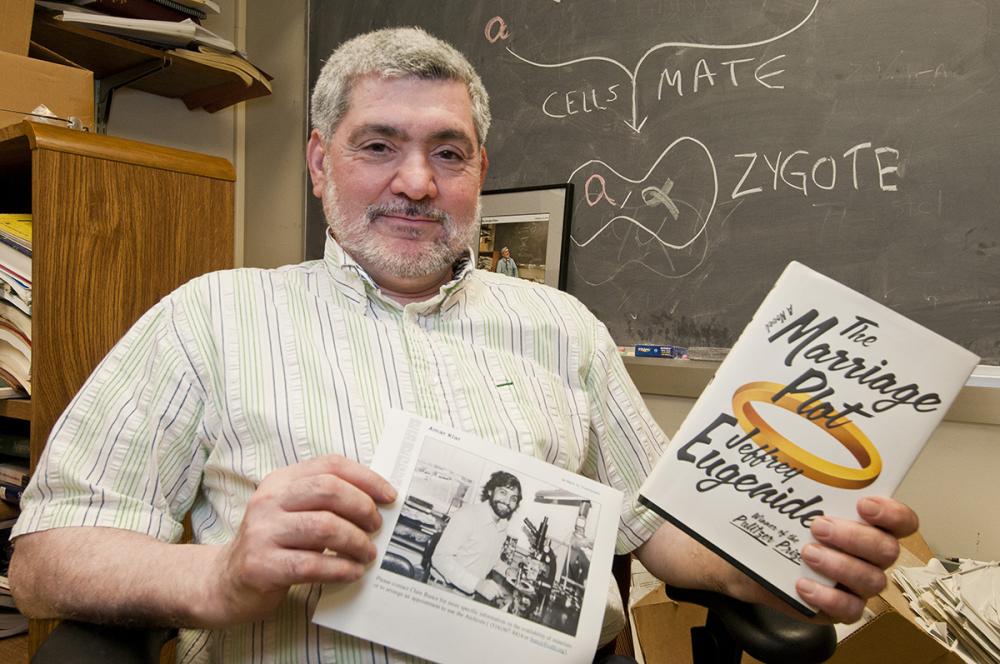By Nancy Parrish, Staff Writer
One morning in early January, Amar Klar sat down at his computer and found an e-mail with a curious message from a colleague.
While reading a bestselling novel, The Marriage Plot by Jeffrey Eugenides, his colleague, a professor at Princeton University, found a description of research on yeast genetics that was surprisingly similar to Klar’s early research. Even the laboratory in the novel was reminiscent of Cold Spring Harbor Laboratory, where Klar had conducted his research.
Klar’s colleague contacted the author, who is also a professor at Princeton, and found that he did, in fact, use Klar’s 1987 paper in Genes & Development as the basis for his descriptions of his main character’s research.
But Jeffrey Eugenides is not a scientist.
Klar, Ph.D., now a senior investigator in the Developmental Genetics Section, Gene Regulation and Chromosome Biology Laboratory, Frederick National Laboratory for Cancer Research, says he was “dumfounded” when he found out about the novel. However, he was also “elated that the general public will read and wonder about our research.”
Imagine That!
Even the New York Times picked up on it. According to an article by Gina Kolata (“The Scientist Was a Figment, but His Work Was Real,” New York Times, February 13, 2012), not only is Eugenides not a scientist, but he had never even met Klar; he describes his creative method as learning a few facts and then imagining characters and circumstances around them.
The article explains that, because one of the novel’s main characters is a young research fellow in the early 1980s, the author said he needed information on the kind of research that was “hot” at that time. Cruising the Internet, he found Klar’s work on yeast mating systems and studied it carefully.
Furthermore, the fictional laboratory’s setting in Provincetown, Mass., was based on the memories of the author’s wife, an artist, who spent one winter in Cold Spring Harbor, the article said.
Research Described Accurately
Klar said his daughter gave him a copy of the book, which he stayed up late reading. “The research was amazingly well described by someone not a biologist. He got the facts and the setting of the institute right,” he said.
Although Eugenides never contacted Klar, he does include an acknowledgement in the front of the book, in which he cites Klar’s paper, “The Mother-Daughter Mating-Type Switching Asymmetry of Budding Yeast Is Not Conferred by the Segregation of Parental HO gene DNA Strands,” Genes & Development 1:1059-1064,1987.
The paper describes the mating behavior of yeast cells, a topic that fits nicely with the novel’s theme of a love triangle between three college students. Klar notes, however, that “the work is lot more than that. From our work with yeast, we discovered new biological principles that should help us explain the biology of human development, hand-use preference, and the origins of breast cancer and psychoses disorders. We have published on these issues, but the respective fields have not caught up with our work.”


